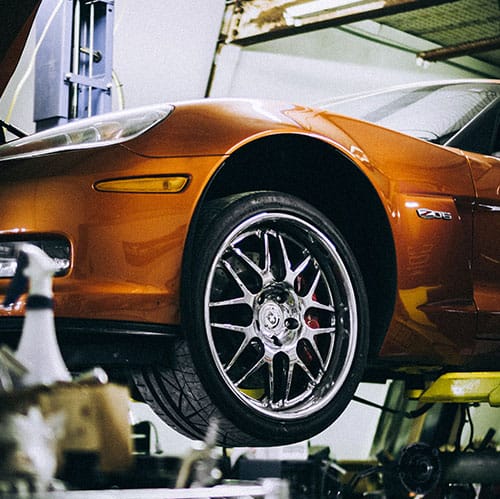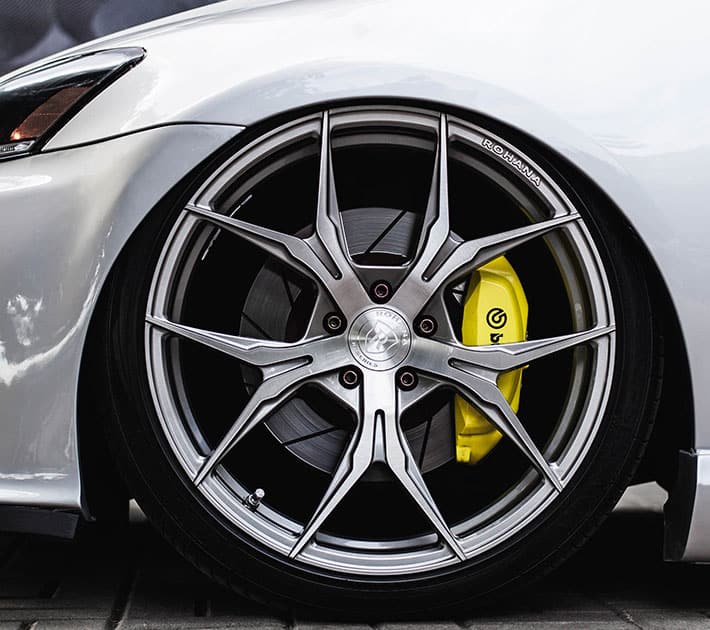Brake Wheel Cylinder Replacement and Service at
Your Home or Office
Average Cost Of Labour for Brake Wheel Cylinder Replacement Service
Labour is calculated by Multiplying the length of time it will take to do the repairs by the Hourly Rate

What is a Brake Wheel Cylinder?
Located in the rear brake system, the brake wheel cylinder helps in slowing down your car by pushing the brake shoes against the brake drum. It is an integral component of the braking system that should always be in good condition. Like many other car parts, however, the brake wheel cylinder may wear after extended periods of use, causing the brake fluid to leak and reducing the efficiency of your car’s braking system.
Note:
Since they cannot be replaced singly, the brake wheel cylinders in both rear tires are often replaced when carrying out this service.

Brake Wheel Cylinder Replacement: Getting Started
-
Check for leaks in the rear wheel cylinders
-
Check that the rear brake shoes and hardware are in good condition
-
Remove faulty brake wheel cylinders and replace with new ones
-
Ensure rear brakes are adjusted
-
Lubricate backing plate
-
Inspect axle seals and confirm there’s no leakage into the brake drums
-
Bleed the whole braking system
-
Test drive car to ensure the brake system is in good condition.

Why Brake Wheel Cylinder Service Is Important For Your Car
When the brake pedal is applied, the wheel cylinder forces pressure to the brake shoe which consequently makes contact with the brake drum, eventually bringing your car to a halt. Hence, a dysfunctional brake wheel cylinder will exert insufficient force on the brake shoe, and this will make it difficult to slow down your car when driving.
Consider replacing your ABS sensors when:
– Applying the brake pedal becomes unusually easy.
– A noise comes from the rear brakes.
– Fluid leaks are seen near the rear tires
Our Recommendation:
The brake wheel cylinders in your car should be inspected at least once every year. Also, ensure to check the brake system in the event that the warning light turns on.

How it Works

Get A Quote

Book an Appointment

Get Your Car Fixed
Google Reviews
Our Mechanics Are Available In Over 20 Locations
We’re available across the Greater Toronto Area, and are expanding quickly.
Cities We Serve
- Brake Wheel Cylinder Replacement in Downtown Toronto, ON
- Brake Wheel Cylinder Replacement in North York, ON
- Brake Wheel Cylinder Replacement in Mississauga, ON
- Brake Wheel Cylinder Replacement in Richmond Hill, ON
- Brake Wheel Cylinder Replacement in Ajax, ON
- Brake Wheel Cylinder Replacement in Pickering, ON
- Brake Wheel Cylinder Replacement in Markham, ON
- Brake Wheel Cylinder Replacement in Scarborough, ON
- Brake Wheel Cylinder Replacement in Etobicoke, ON
- Brake Wheel Cylinder Replacement in Brampton, ON
More Specific Brake Wheel Cylinder Replacement Estimates
- Mercedes-Benz Brake Wheel Cylinder Replacement
- BMW Brake Wheel Cylinder Replacement
- Acura Brake Wheel Cylinder Replacement
- Nissan Brake Wheel Cylinder Replacement
- Ford Brake Wheel Cylinder Replacement
- Mazda Brake Wheel Cylinder Replacement
- Hyundai Brake Wheel Cylinder Replacement
- Honda Brake Wheel Cylinder Replacement
- Toyota Brake Wheel Cylinder Replacement
- Volkswagen Brake Wheel Cylinder Replacement













